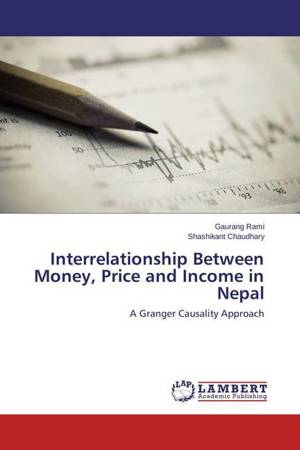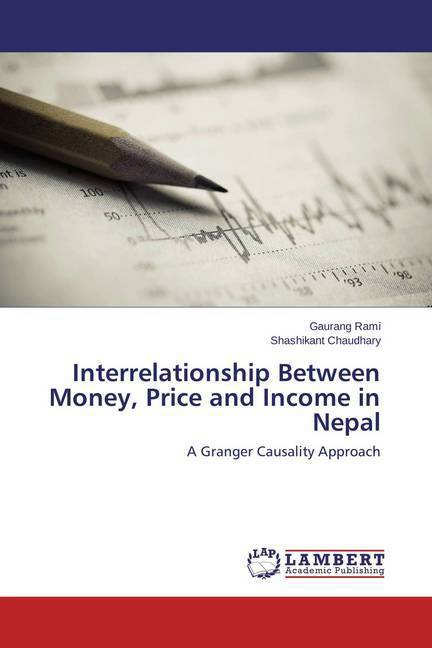
- Afhalen na 1 uur in een winkel met voorraad
- Gratis thuislevering in België vanaf € 30
- Ruim aanbod met 7 miljoen producten
- Afhalen na 1 uur in een winkel met voorraad
- Gratis thuislevering in België vanaf € 30
- Ruim aanbod met 7 miljoen producten
Zoeken
Interrelationship Between Money, Price and Income in Nepal
A Granger Causality Approach
Gaurang Rami, Shashikant Chaudhary
Paperback | Engels
€ 41,95
+ 83 punten
Omschrijving
The causal relationships between money, income & prices have been an active area of investigation in economics, particularly after the advent of causality concept by Granger (1969) and its application by Sims (1972). The Monetarists claim that changes in stock of money plays an important role to determine changes in nominal income and prices. Keynesians argued that changes in income cause changes in money stock via demand for money. In this book, the issues of causality between money supply, price level and income has been examined for Nepal. The annual data shows causality running from money supply to income, which suggests that income growth is endogenous and monetary policy regarding money supply can play an important role in determining income growth in Nepal. There is no causality between money supply and price level suggesting that inflation is not purely a monetary phenomenon in Nepal and changes in price level are caused by structural factors as explained by the Keynesians. The monthly data partially indicates that price level causes money supply in Nepal. It means that monthly money supply is endogenous and increasing money supply is due to increase in the inflation rate.
Specificaties
Betrokkenen
- Auteur(s):
- Uitgeverij:
Inhoud
- Aantal bladzijden:
- 76
- Taal:
- Engels
Eigenschappen
- Productcode (EAN):
- 9783659548734
- Verschijningsdatum:
- 16/12/2014
- Uitvoering:
- Paperback
- Afmetingen:
- 150 mm x 220 mm
- Gewicht:
- 122 g

Alleen bij Standaard Boekhandel
+ 83 punten op je klantenkaart van Standaard Boekhandel
Beoordelingen
We publiceren alleen reviews die voldoen aan de voorwaarden voor reviews. Bekijk onze voorwaarden voor reviews.








